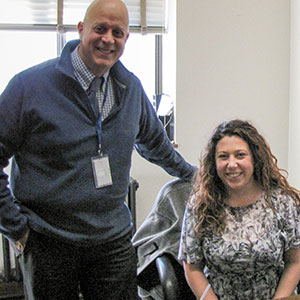By Joe Lambe
Association with violent crime can get you a ride to drug treatment and literacy training, or to a prison cell.
The Kansas City No Violence Alliance conducts mass arrests, but quietly works to help even more people escape lives of crime.
That carrot-and-stick approach is common to such “focused deterrence” attacks on violent crime, but NoVA’s carrot is sweeter than most.
Jackson County drug court has long helped offenders, officials said Thursday, and that carried into the NoVA program largely credited for 23 percent fewer homicides last year.
Rachel Epstein, who formerly worked with drug court clients, is the supervisor of the five “client advocates” in NoVA.
Since it began about two years ago, they have logged more than 1,662 referrals to things like drug treatment, job and life skills training and literacy operations.
Michael Mansur, chair of the NoVA communications committee, said, “I think if you do focused deterrence right you end up helping more people than you incarcerate.”
The NoVA advocates chauffer people in to get programs started and stay with them to help, said Epstein, 28, who lives in the Waldo area.
Many cannot read or write well or at all, she said. “We don’t want them to get lost in the shuffle of everything.”
It can be the start of a long-term relationship.
A lot of clients want “instant gratification – they want a job right away, but if they can’t read or write…..”
It can take a year to get them to enough literacy to get a job or go for their GED, she said.
Also, many need to learn how to hold a job, she said. “People quit jobs because their bosses yell at them when they are late or won’t let them take a break whenever they want.”
Some must learn they can no longer get up at 2 p.m. to start their day, she said.
The clients come from a NoVA list of people documented as associated with violence or homicide. They can be suspects, people tied to suspects or victims or relatives of victims.
They are mostly in their teens and early 20s and backgrounds range from no convictions to decades in prison.
They can come in through NoVA call-in meetings, probation, parole, juvenile court or reentry programs.
Mansur said that other cities with focused deterrence are moving toward NoVA’s more hand holding approach.
Studies of the deterrence programs also show they do not push crime into suburbs or other parts of a city, he said.
Those successfully helped or arrested “are not doing violence in their old neighborhoods or a new neighborhood,” he said.
But because criminals live throughout the area, he said, a goal of NoVA this year is to expand into surrounding cities like Independence, Raytown, Grandview and KCK.




Who’s talking